Tropida Genesis 31: Twin 300-hp Mercury Verados

In recent years, many shipyards have left behind the traditional design of inflatable boats, creating rigid hull inflatable boats (RIBs) with innovative features that stand out. A typical example is Tropida, a Greek manufacturer of RIBs whose boats have inventive, effective design elements in an aggressive line where aerodynamics take priority.
The innovative design of the bow steps and the anti-dive system, a Tropida trademark, help reduce the boat’s deceleration in following seas by keeping the bow from stuffing. Tropida’s boats conform to EU directives for CE class B & C. The company has ISO 9001/2015 Certification from Bureau Veritas. All of Tropida’s designs are registered with the Industrial Property Organization (OBI) and are protected by the Copyright Act.
The new Genesis 31 combines the advantages of large RIBs and the flexibility of smaller ones, delivering high speeds usually found in racing setups. She runs on a hull designed by Adam Younger and Takis Samartzis and blends the deep V and the technology of ventilated steps in combination with special shipbuilding elements.
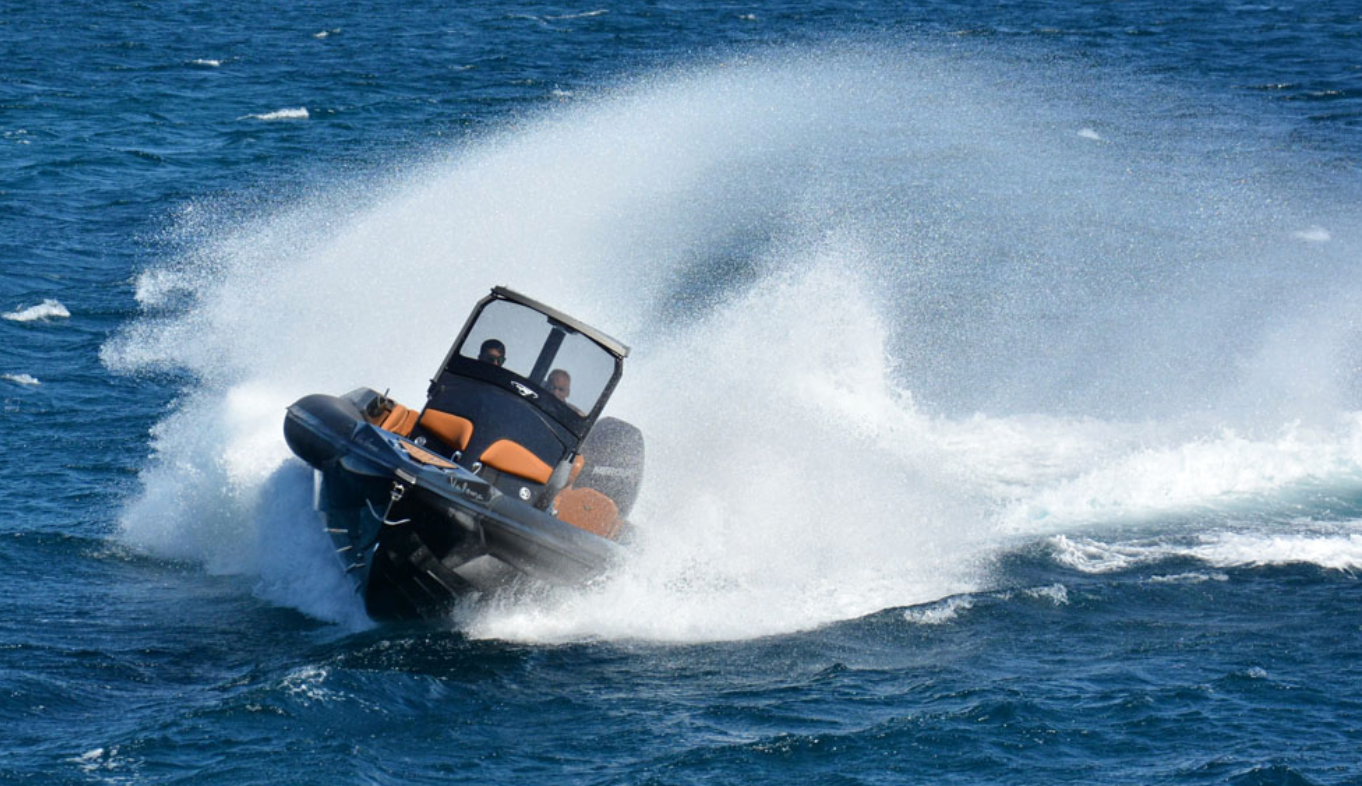
On Deck
Up front, the bow has two seats on the front of the console and a large sundeck that can convert to an enclosed sleeping area. The bow sundeck opens on an electro-hydraulic ram, revealing a large storage area finished in gelcoat. Small lockers are outboard on each side. Because of the lower profile at the bow, the anchor exits through the stem in a clean design and installation. A windlass takes care of deploying and retrieving the anchor. The two console seats have latches on them and open the head compartment in the console.
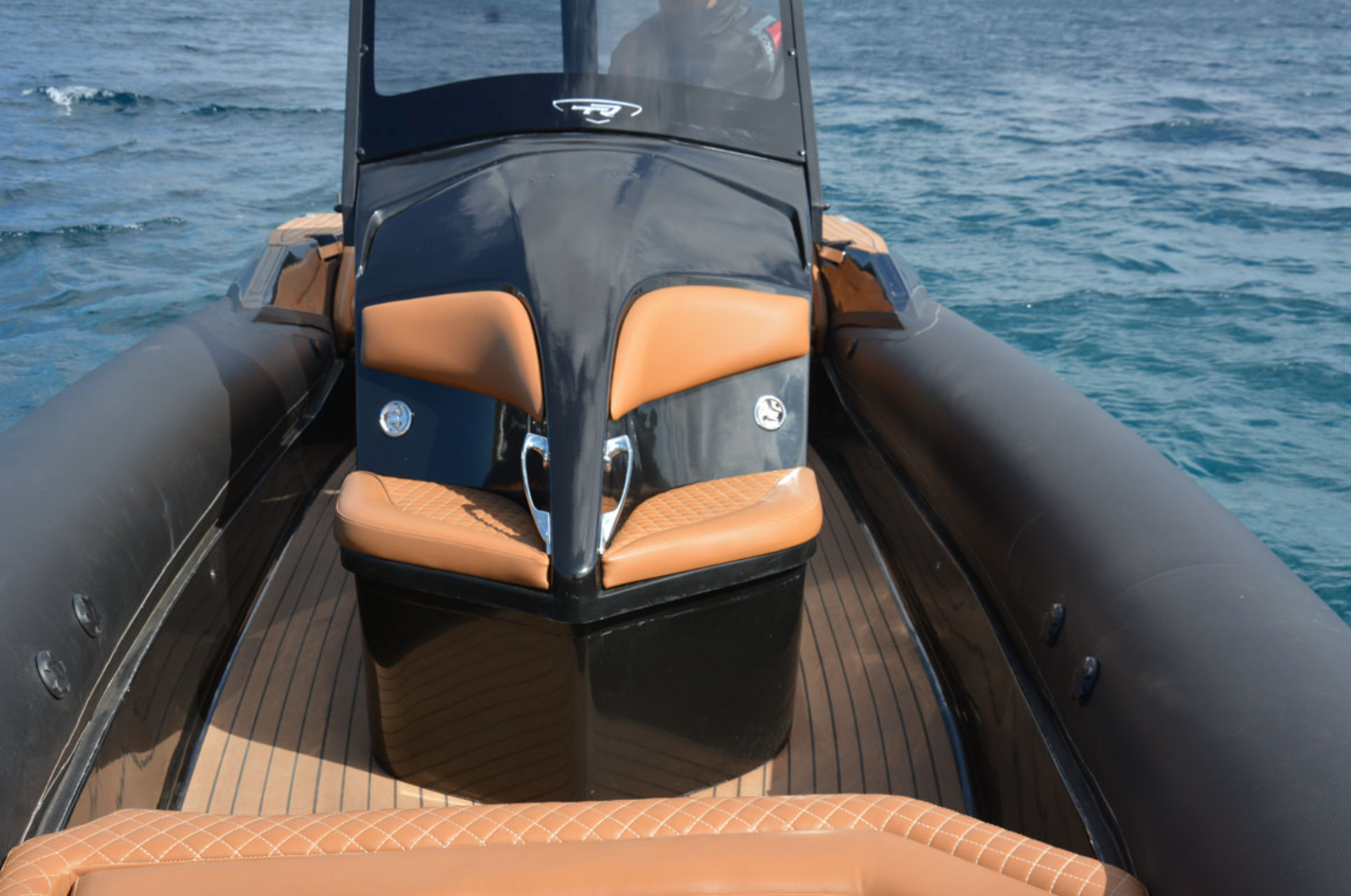


Through the boat, the decks are covered in synthetic teak that better resists time and the elements and requires zero maintenance. An owner can choose from a wide selection of colors and upholstery combinations.
The Helm
Our test boat was the hardtop version with an adjustable roof. It can be adjusted to the appropriate height depending on the speed and weather with the push of a button. The tall windshield and the adjustable T-top provide shelter from the wind and the spray. Passageways on each side are wide enough for passengers to move fore and aft comfortably.
The instrument panel has the appropriate space for large multifunction displays and the captain has an unobstructed forward view, even when driving from a seated position. Most of the panel is made from carbon, while the left section that contains the steering wheel and accessory switches the pod for the digital engine controls is covered in high-quality leather. Designed by the owner of the Tropida yard, the helm seats offer comfort and safety.

The Cockpit
In the Genesis 31’s cockpit, there’s a U-shaped lounge aft plus two additional folding seats. She can be with either a wet bar behind the helm seats or two additional seats. Two folding seats to port and starboard increase passenger capacity.
In the center of the U-shaped sofa, a table can be raised or lowered and filled with a cushion to create a large sunlounge. Outboard on each side are wide gunwales lined with synthetic teak that facilitate movement around the engines. The folding lights, filler caps and cleats are aft on gunwales so that they do not protrude.
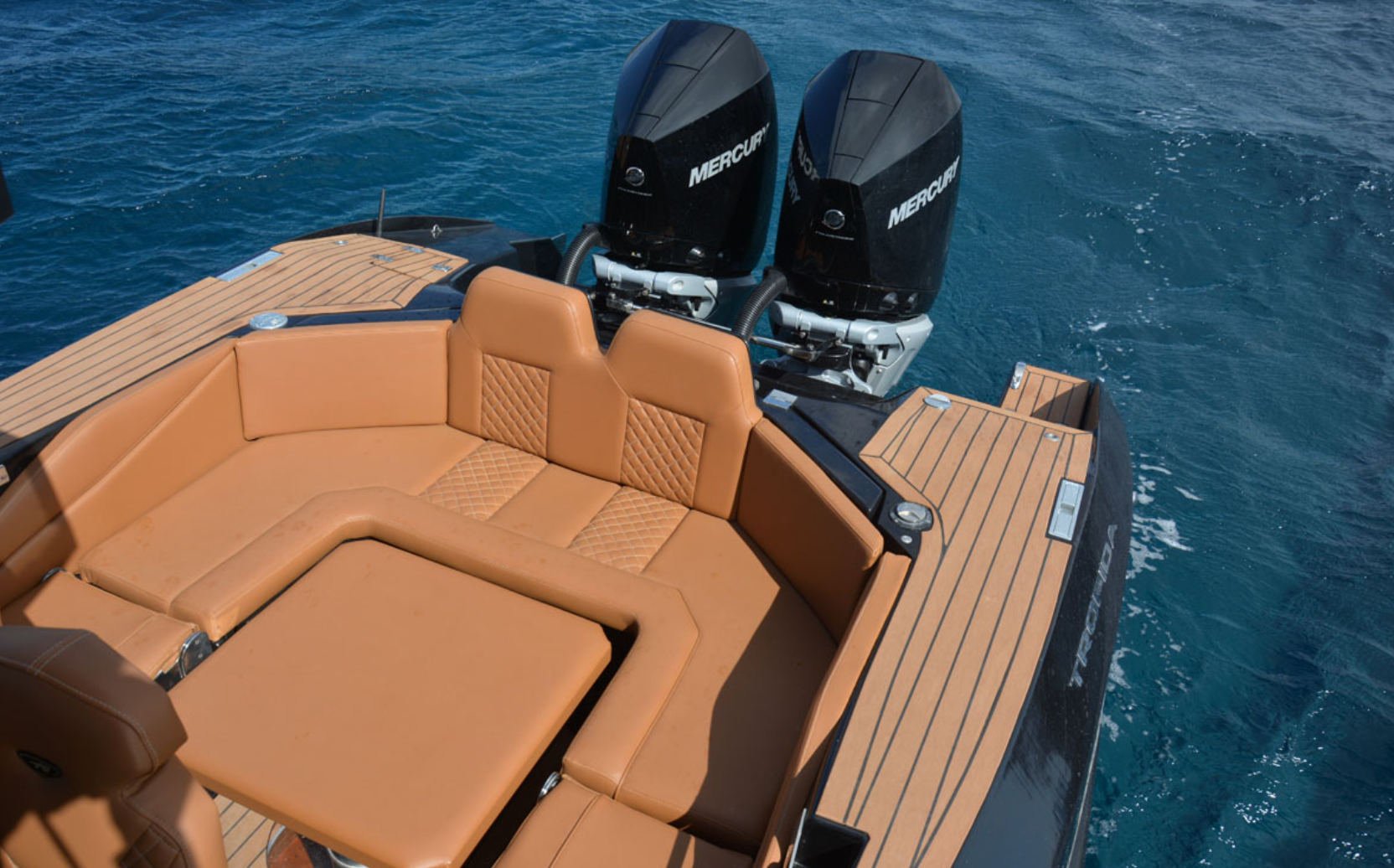
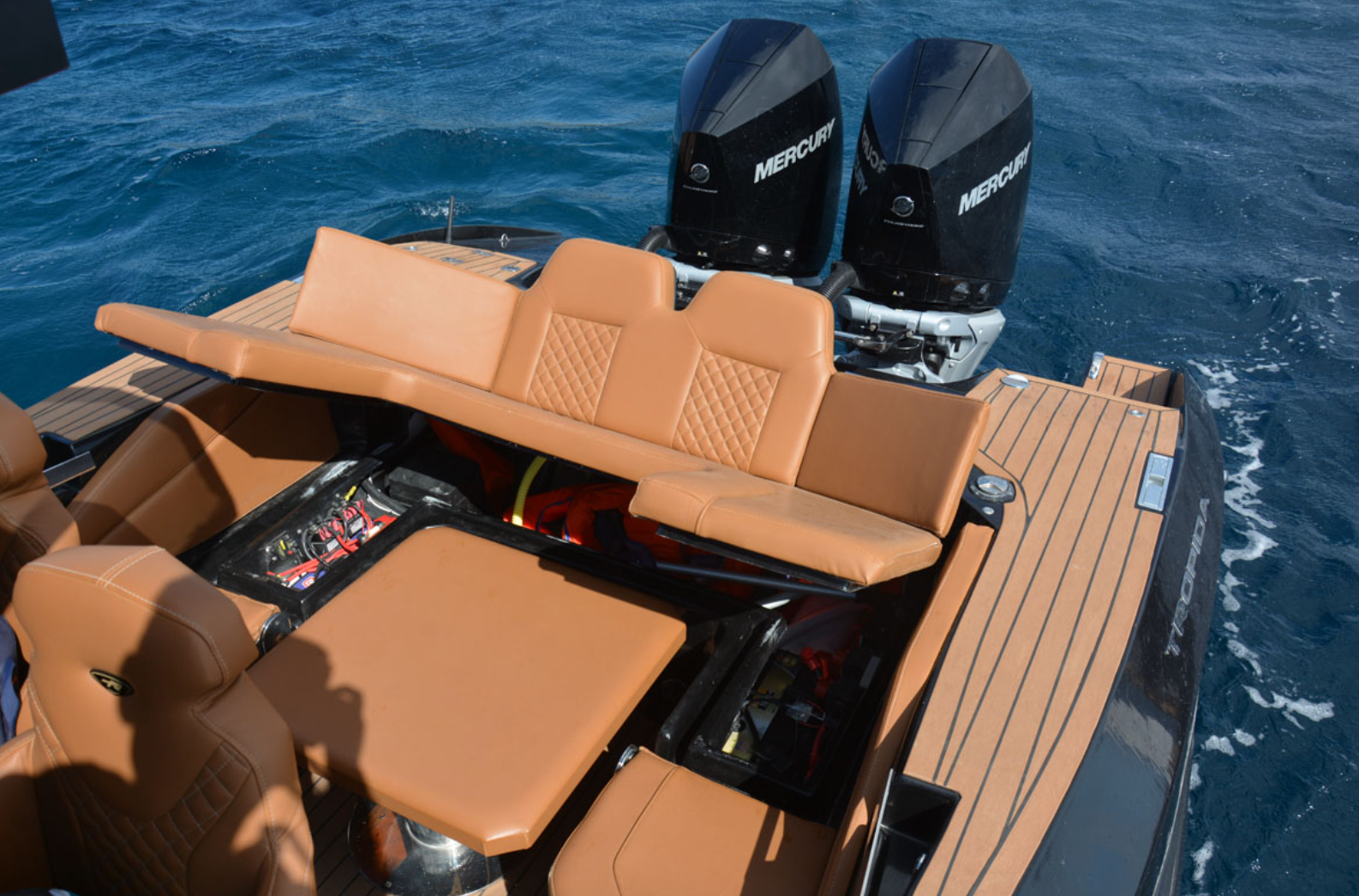
At Sea
With a bow entry of 55 degrees and 23 degrees of deadrise at the transom, the twin-stepped bottom design of the Genesis 31 delivered a soft ride while maintaining a level cruising angle throughout the rpm range.
Our test RIB was powered by two 300-hp Mercury Verado engines turning 14 5/8” x 23” (37.15 cm x 58.12 cm) Revolution 4 propellers through a 1.75:1 gear reduction.
With wave heights of 3’ to 5’ (1 to 1.5 m) and strong winds, we headed out with three people on board and three crew members and 53 gallons (200 L) of gasoline. I pushed the controls forward and the boat responded with strong acceleration. The propellers were will dialed into the hull and soon we were running at speeds exceeding 60 knots.
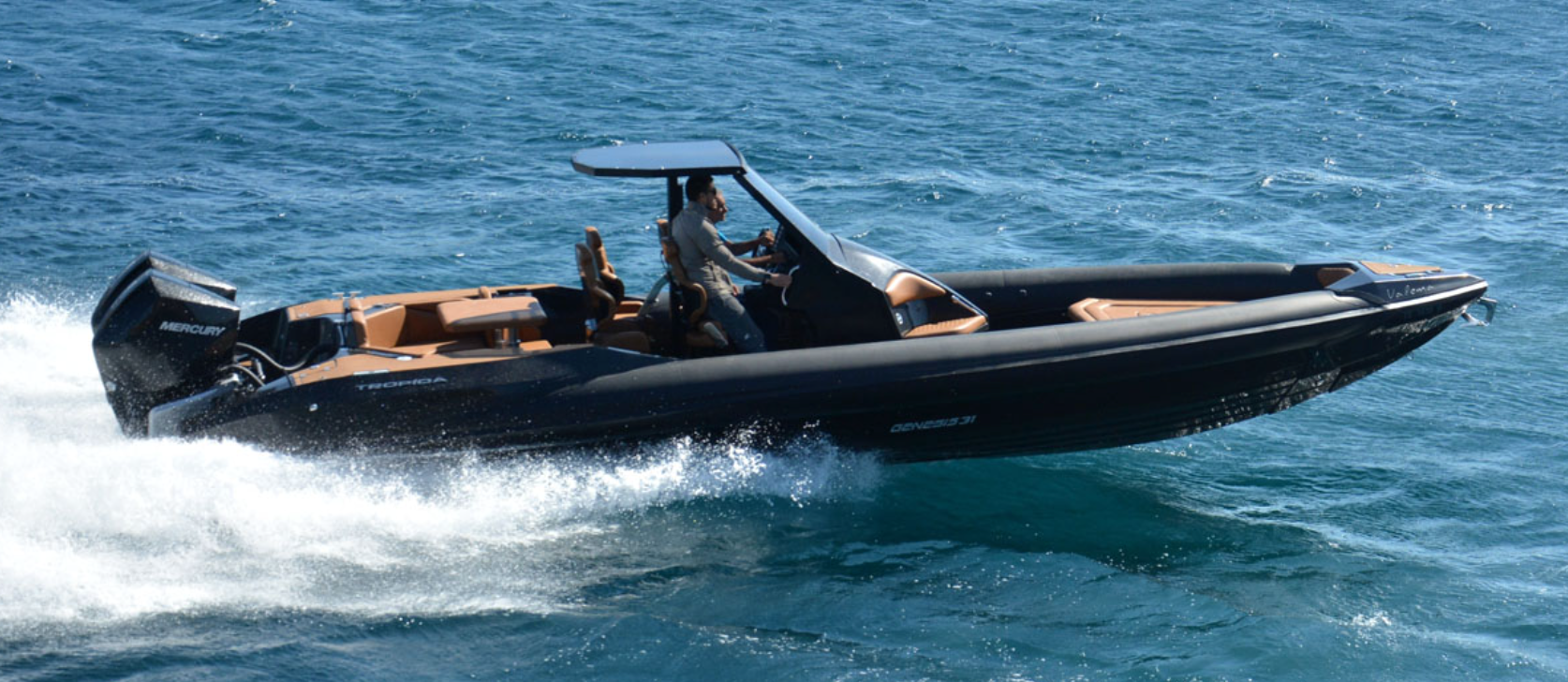
Handling
The stepped hull created just enough lift to keep the Genesis 31 running level and the highly cupped four-blade propellers carried the bow at a good attitude, eliminating any tendency to stuff in our challenging conditions. Even in following seas, the bow’s anti-stuff design elements worked flawlessly and we passed effortlessly over wave peaks.
Even at speeds faster than 60 knots, where other boats can chine walk or exhibit other unsightly handling traits, the Genesis 31’s stability was enviable. The bottom could certainly handle more power and higher speeds.
We performed abrupt maneuvers at high speeds and the boat responded appropriately, ignoring the waves and strong winds. At wide-open throttle we reached Mercury’s recommended maximum rpm range and hit a top speed of 66.5 knots.

In acceleration tests, the Genesis 31 sprinted to 30 knots in 6.5 seconds, while reaching 40 knots in 9 seconds.
At 3000 rpm we recorded 25 knots and fuel consumption of 1.8 liters per nautical mile. This was the most economical cruising speed and gave us a range of 111 nautical miles per 53 gallons (200 L) of fuel.
At 3500 rpm, she ran 31 knots and burned 2 liters per mile, while at 4000 rpm our speed was 37.5 knots with the engines asking for 1.9 liters per mile.
Genesis 31 Performance
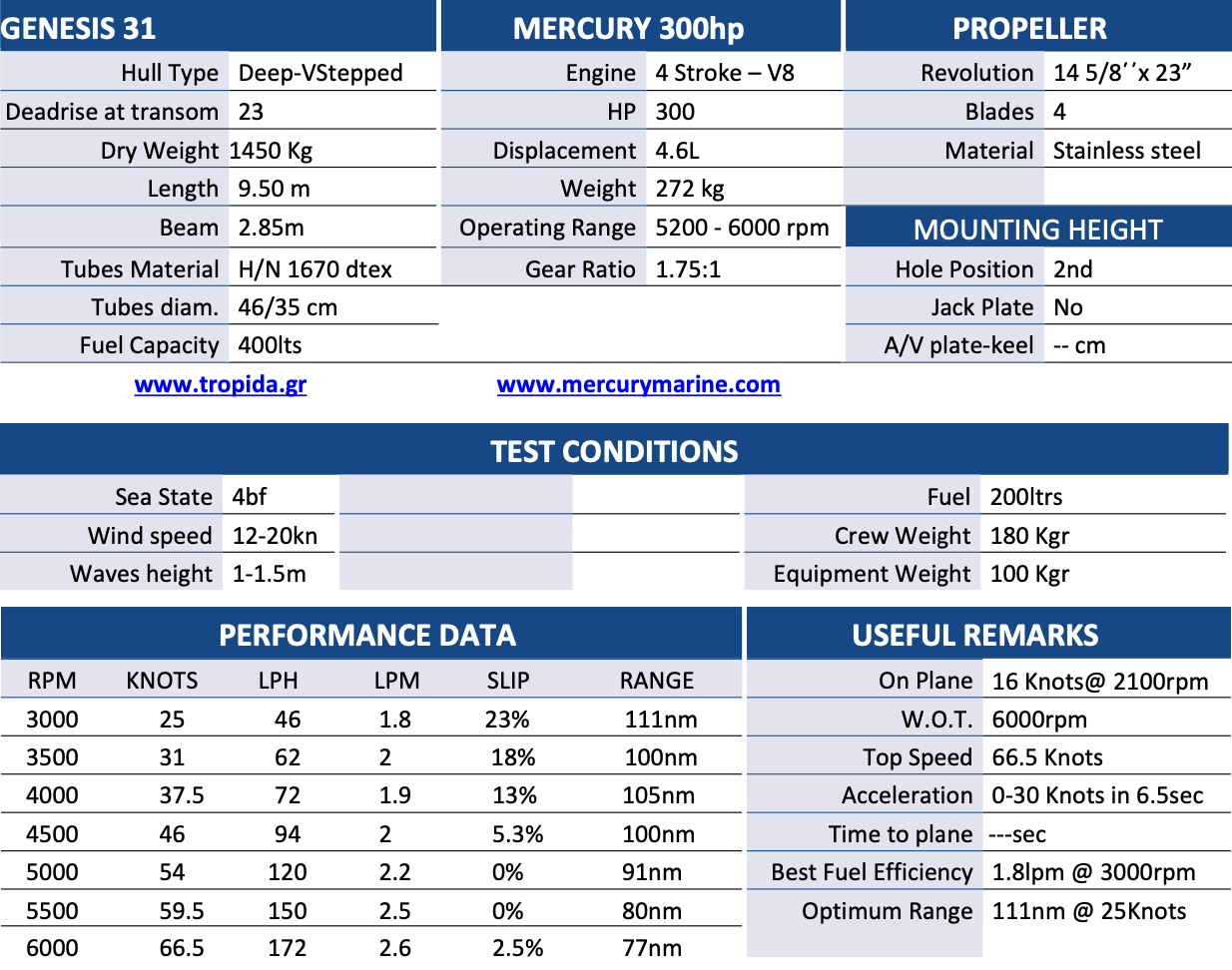
The slip percentages we recorded were impressive. At 4500 rpm, the Revolution propellers showed a slip of only 5.3% while at 5000 and 5500 rpm we observed zero slip. At WOT, the slip was negative, a result of both the high cup of the propellers and the fact that two propellers were running in the water
The weather conditions we had during our sea trial were ideal for evaluating the Genesis 31’s abilities, as well as the wavelength that perfectly matched the length of its hull. She’s a highly navigable RIB and is aimed at those who want to combine leisure with high performance and a high level of cruising while maintaining low fuel consumption.
Article courtesy of e-Ribbing.com.